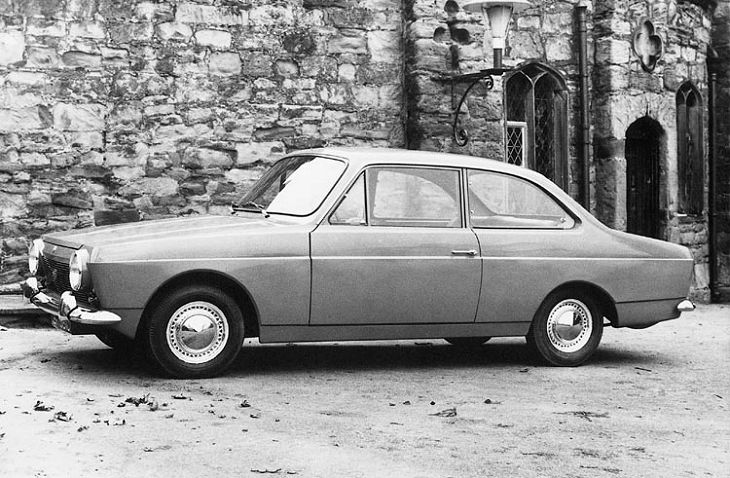In 1966, the streets of Istanbul witnessed a revolutionary moment in Turkish industrial history. A sleek two-door sedan, wearing the proud badge of Anadol, rolled off the production line at Otosan’s factory. This wasn’t just another car launch – it marked Turkey’s first successful entry into mass automobile production.
The automotive landscape of the 1960s was dominated by established European and American manufacturers. Yet here was Turkey, a nation determined to carve its own path in the industry, presenting a uniquely engineered vehicle that would challenge perceptions and set new standards.
The Birth of Turkish Automotive Dreams
The journey of Anadol A1 began with an ambitious partnership between Turkish manufacturer Otosan and British specialist Reliant. Drawing from Reliant’s expertise in fiberglass construction, Turkish engineers adapted the RW5 prototype to meet local requirements and preferences.
The development team faced unique challenges in creating a car that could handle Turkish roads while remaining affordable for the domestic market. The solution lay in innovative material choices and clever engineering compromises.
“The Anadol A1 represented more than just a car – it was Turkey’s statement to the world that we could compete in the global automotive arena,” reflects Mehmet Yılmaz, a veteran automotive historian who has documented the car’s history for three decades.
The result was a vehicle that perfectly balanced affordability with durability. At 26,800 Turkish lira (approximately $2,980 at the time), the A1 positioned itself as an attainable dream for Turkey’s growing middle class.
Engineering Marvel of Its Time
The Anadol A1’s most distinctive feature was its fiberglass body – a choice that proved both innovative and practical. This material selection reduced overall weight to just 828 kg while providing excellent durability in various weather conditions.
Under the hood, the A1 housed a robust Ford Kent-based engine, initially offering 1198cc of displacement, later expanded to 1298cc. The power plant was paired with a four-speed manual transmission, delivering power to the rear wheels.
Fact!
The Anadol A1 was one of the first mass-produced cars in Europe to feature a fiberglass body, predating similar applications by several major manufacturers.
Key technical features included:
- lightweight fiberglass construction for improved fuel efficiency;
- adapted Ford Kent engine for reliable performance;
- rear-wheel drive configuration for better handling;
- compact dimensions optimized for urban use;
- serviceable mechanical components for easy maintenance.
The engineering team paid special attention to the suspension system, tuning it specifically for Turkish road conditions. This attention to local requirements would prove crucial in the car’s success.
Racing Heritage and Performance
The Anadol A1’s capabilities extended far beyond daily transportation. It became the first Turkish car to compete in professional rally events, establishing the legendary Anadol Ralli Takımı (ART).
“Racing the A1 was an experience like no other. Its lightweight body and responsive handling made it a formidable competitor on rally stages,” shares Ali Kemal, former ART team driver from 1968-1971.
The racing program helped improve the production model through real-world testing and competition experience. These improvements found their way into regular production vehicles, benefiting everyday drivers.
The competition success story of the A1 inspired a generation of Turkish motorsport enthusiasts and proved that domestic manufacturers could compete at international levels.
Cultural Icon and Legacy
Today, the Anadol A1 stands as more than just a historical artifact. It represents a pivotal moment in Turkish industrial development and continues to influence modern Turkish automotive design thinking.
Historical Reference!
The Anadol A1's production run from 1966 to 1975 saw the manufacture of over 1,760 units in its first year alone, establishing it as Turkey's first successfully mass-produced automobile.
Surviving examples have become highly sought-after collector’s items, with well-preserved models commanding impressive prices at classic car auctions. The car’s unique design and historical significance make it a centerpiece of automotive museums across Turkey.
The A1’s influence extends into popular culture, having appeared in numerous films and television shows, cementing its place in Turkish cultural heritage.
Pioneering Spirit Lives On
Looking back at the Anadol A1’s journey reveals more than just an automotive success story. It demonstrates how determination and innovation can overcome technological and economic challenges.
The spirit of the A1 continues to inspire Turkey’s modern automotive industry, serving as a reminder that groundbreaking achievements often start with bold vision and unwavering commitment to progress.
Pros & Cons
| Advantages | Disadvantages |
|---|---|
| Lightweight fiberglass construction improved fuel efficiency and handling | Limited production numbers make finding replacement parts challenging |
| Robust Ford-based engine provided reliable performance | Fiberglass body repairs require specialized expertise |
| Historically significant as Turkey’s first mass-produced car | Original performance specs modest by modern standards |
| Excellent durability and corrosion resistance | Interior comfort limited compared to contemporary European models |
| Strong collector value and investment potential | Restoration costs can be significant due to rarity |
| Pioneering use of materials in automotive industry | Limited safety features by modern standards |
The Anadol A1 remains a testament to Turkish industrial ambition and engineering capability. While it may not have rivaled European luxury cars of its era, it successfully achieved its primary goal: establishing Turkey’s automotive manufacturing credentials. Today’s collectors and enthusiasts recognize it not just for what it was, but for what it represented – the dawn of Turkish automotive independence.

